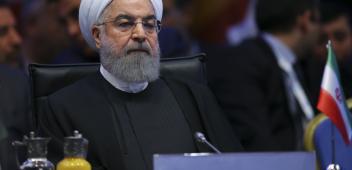All Western guns blazing not as easy as advocates make out
Originally published in The Australian.

A year after he first struck a target in Syria in response to the use of chemical weapons, Donald Trump has doubled down. This time though, it was qualitatively and quantitatively different. Twice as many missiles were fired, three targets were selected instead of one and he was joined by France and Britain in the venture. Like the first attack, the operational planners were careful to ensure that there was a causal link between the target selected and the crime committed. Whether this second strike will be any more effective in modifying Bashar al-Assad’s forces’ behaviour remains to be seen.
Critics of this type of response feared the risk of any strike drawing Washington into a conflict with Moscow in the event Russian personnel were killed. After the strike other critics were quick to claim that it was too limited in its scope and didn’t send a strong enough message, that it did nothing to relieve the humanitarian suffering of the Syrian people, or that it wasn’t part of any broader strategic response to the Syrian crisis.
The reality is that the use of chemical weapons in Syria is largely an issue of tactical significance set in the broader strategic problem posed by the Syrian conflict. Of course the strikes had a secondary purpose of attempting to reinforce international norms prohibiting the use of chemical weapons by other parties in the future. And London’s decision to so publicly join the attack would have also been designed to send a message to Moscow in the aftermath of the poisoning of Sergei Skripal last month. But the intent of the strike was to raise the cost to Assad of using such weapons in the future, not to shift the trajectory of the civil war itself. The target list, just like the aim, was limited.
Forget the photos of flag-waving Syrians taking to the streets of Damascus deriding the ineffectiveness of the strikes, or the claims from Russian or Syrian sources that many of the missiles were shot down. The reality is that the target audience wasn’t the average Syrian citizen, it was Assad and his key advisers and decision-makers. And Syrian air defences weren’t able to intercept a single missile. Damascus and its allies will understand that not only have London and Paris now joined in military action against Syrian targets, his ability to stop them from doing so in the future is limited if non-existent. And Trump and Defence Secretary Jim Mattis made it clear that there would be another time if such weapons were used again.
Otherwise, Assad’s conventional military assets were left alone. This obviously dissatisfied those who argued for a more robust response amid claims that it simply allows the regimen to continue to kill its opponents using high explosive rather than chemical weapons. That is the brutal reality of the Syrian civil war though. Barack Obama’s policy of supporting rebel groups logistically without becoming engaged militarily failed once Russia came to the rescue of its ally in Damascus. And Trump has never seen the need for US military engagement in Syria short of defeating Islamic State. The White House has never had the stomach for intervening in Syria, and those who advocated doing so have never been able to enunciate an operational concept that stood up to any realistic examination.
A more important point often overlooked by interventionists is the nature of the opposition. In many cases, the armed groups are Islamists who are deployed among the civilian population in order to deter military force being used against them. In Douma, it was a faction of Jaish al-Islam that remained after negotiations for their relocation to northern Syria broke down.
International humanitarian law requires belligerents only use force that is proportional to the threat faced and that is discriminatory in its application. Damascus has little regard for such limitations. But such law also forbids armed groups from deploying in and among civilians, which they do routinely. Liberal democrats who advocate greater military intervention against the Assad regimen to stop the deaths of civilians are too often silent on calling for armed groups to redeploy away from the civilian areas they operate from. Nor do they articulate why liberal democracies should intervene and effectively support such Islamist groups. This is in no way meant to justify the regime’s military approach. Rather it is meant to illustrate just how complex the civil war is, and why any broader military intervention in Syria by the West is not as easy as advocates make out.
Largely because of the complexity of the problem in Syria and the lack of leverage the West has had there for historical and political reasons, we see Trump eschewing the pursuit of strategic outcomes in Syria in order to focus on the tactical. Trump has publicly stated his desire to remove the troops who remain in the country’s northeast once the mission to defeat Islamic State has been accomplished. And the strikes against Assad’s chemical weapons facilities are simply designed to place limits on what weapons are acceptable to be used in the conflict. Beyond these tactical aims, few strategic goals have been set. And without goals being set by the White House, plans to achieve them can’t be produced. Which is why there appears no end in sight to the Syrian conflict.


